
IEC 61373-2010 Standard Testing Laboratory
Scope of Testing
Applicable to electronic equipment/devices on railway rolling stock.
Classification of Test Values
Based on the location of the equipment on the vehicle, the test values in this standard are categorized into three classes:
- Class 1: Body Mounted
- Class A: Cabinets, assemblies, equipment, and components directly mounted on the upper or lower part of the body.
- Class B: Any components located inside enclosures directly mounted on the upper or lower part of the body.
Note 1: When the equipment's mounting location is unknown, Class B should be used.
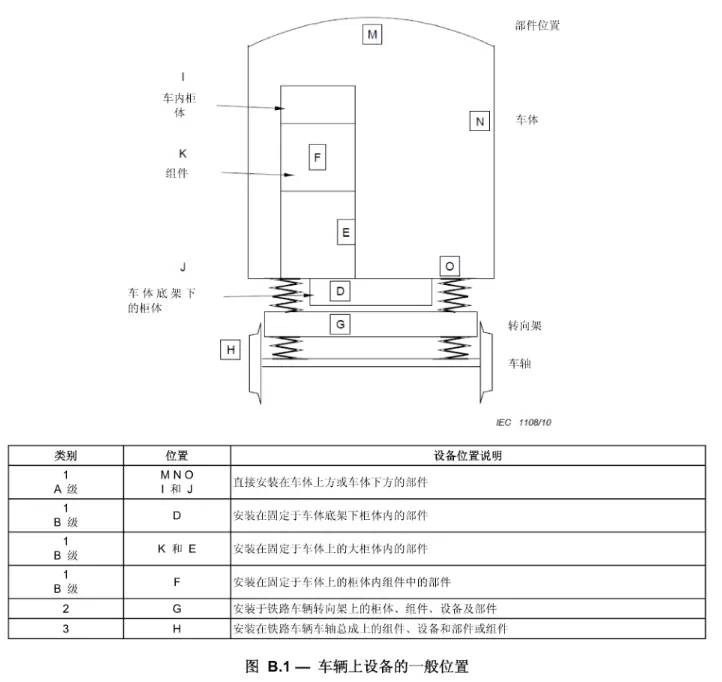
- Class 2: Bogie Mounted
Equipment such as cabinets, assemblies, or components mounted on the bogies of railway vehicles.
- Class 3: Axle Mounted
Equipment or components mounted on the wheelset assembly of railway vehicles.
Note 2: For equipment mounted on vehicles with single-stage suspension (e.g., freight cars and trucks), axle-mounted equipment should be tested as Class 3 unless otherwise agreed upon in the tender. All other equipment should be tested as Class 2.
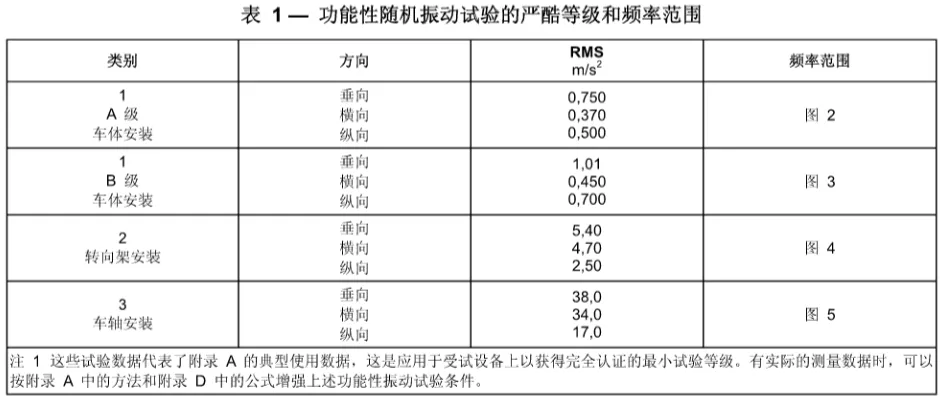
Terms and Definitions
a. Random Vibration:
Vibration whose instantaneous value cannot be precisely predicted at a given time.
b. Acceleration Spectral Density (ASD):
The mean square value of the portion of an acceleration signal passed through a narrowband filter with a central frequency, when the bandwidth approaches zero and the averaging time approaches infinity, expressed per unit bandwidth within the limit range.
c. Functional Random Test:
The functional random test level is the minimum test level used to verify that the equipment operates normally under potential environmental conditions on railway vehicles (see Section 8).
d. Simulated Long-Life Test:
This test aims to verify the mechanical integrity of equipment under enhanced environmental conditions. Functional verification is not required during this test (see Section 9).
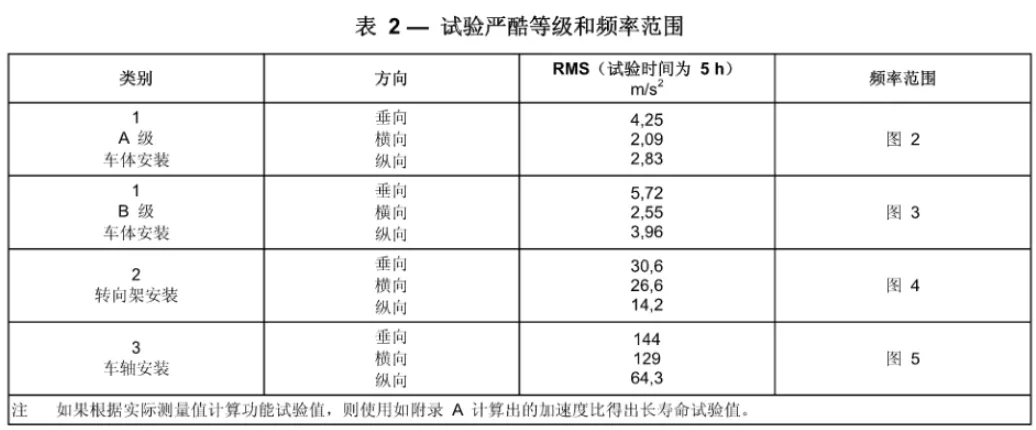
e. Shock Test:
The shock test simulates accidental conditions during use. Functional verification is not required during the test; however, it must be demonstrated that the operational state remains unchanged, no visible deformation occurs, and mechanical integrity is not compromised. These observations should be clearly stated in the final test report (see Section 10).
Test Sequence
1. Perform simulated long-life testing under enhanced random vibration levels for vertical, lateral, and longitudinal axes.
2. Perform shock testing for vertical, lateral, and longitudinal axes.
3. (If specified or agreed) Perform transportation and handling tests.
4. Perform functional random vibration testing for vertical, lateral, and longitudinal axes.
Specific Test Conditions
a. Functional Random Vibration Test
Equipment should be tested according to the relevant root mean square values and frequency ranges provided in Table 1.
- If the actual orientation of the equipment is unclear, testing should be conducted on three axes using the vertical direction's root mean square values.
- Testing duration is typically no less than 10 minutes, with a recommended duration of 1 hour.
b. Simulated Long-Life Random Vibration Test (Equipment Non-Operational)
Equipment should be tested according to the relevant root mean square values and frequency ranges provided in Table 2.
- If the actual orientation is unclear, testing should be conducted on three axes using the vertical direction's root mean square values.
- All equipment must undergo a total test duration of 15 hours, typically 5 hours on each of the three mutually perpendicular axes.
- If overheating occurs during the test (e.g., rubber components), the test may be paused to allow the equipment to return to normal.
- The total test duration must reach 5 hours, and test pauses should be recorded in the report.
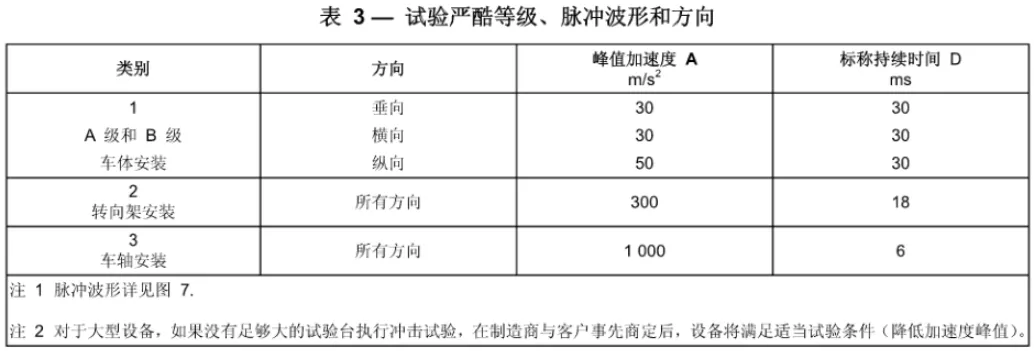
c. Shock Test (Equipment Non-Operational)
- The tested equipment should be subjected to 18 shocks (three positive and three negative in each of the three orthogonal axes).
- Testing must be repeated for each mechanical state specified in Section 6.3.1.
- Test conditions are detailed in Table 3.
Email:hello@jjrlab.com
Write your message here and send it to us
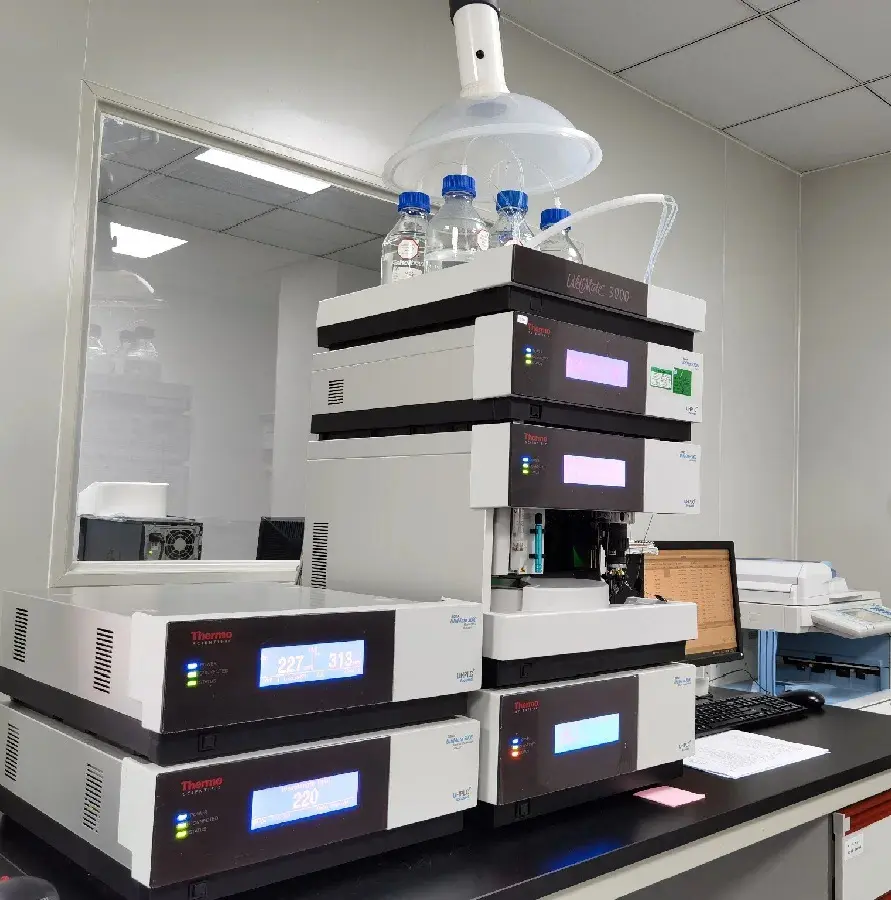 Packaging Validation ISO 11607 Test Report
Packaging Validation ISO 11607 Test Report
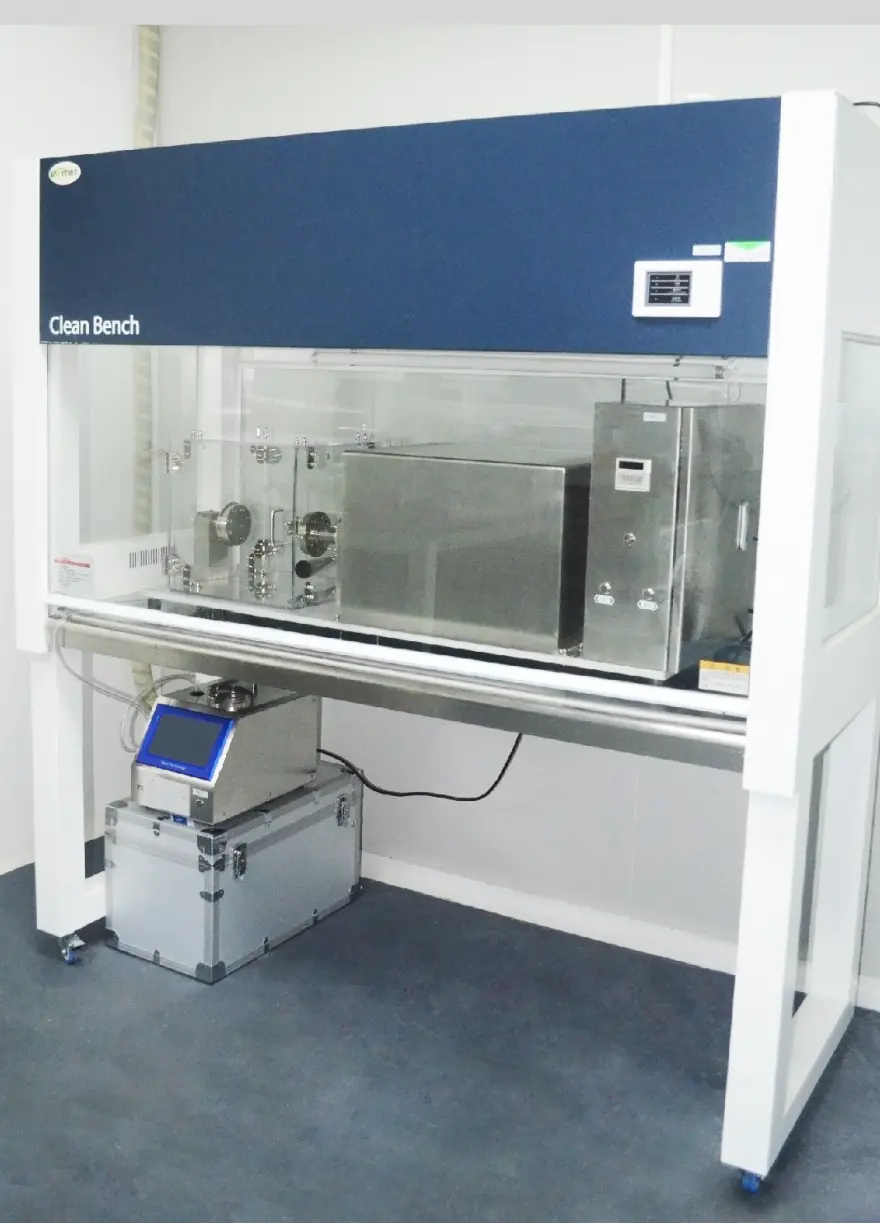 What is the ISO 11607-1 Packaging Validation Test?
What is the ISO 11607-1 Packaging Validation Test?
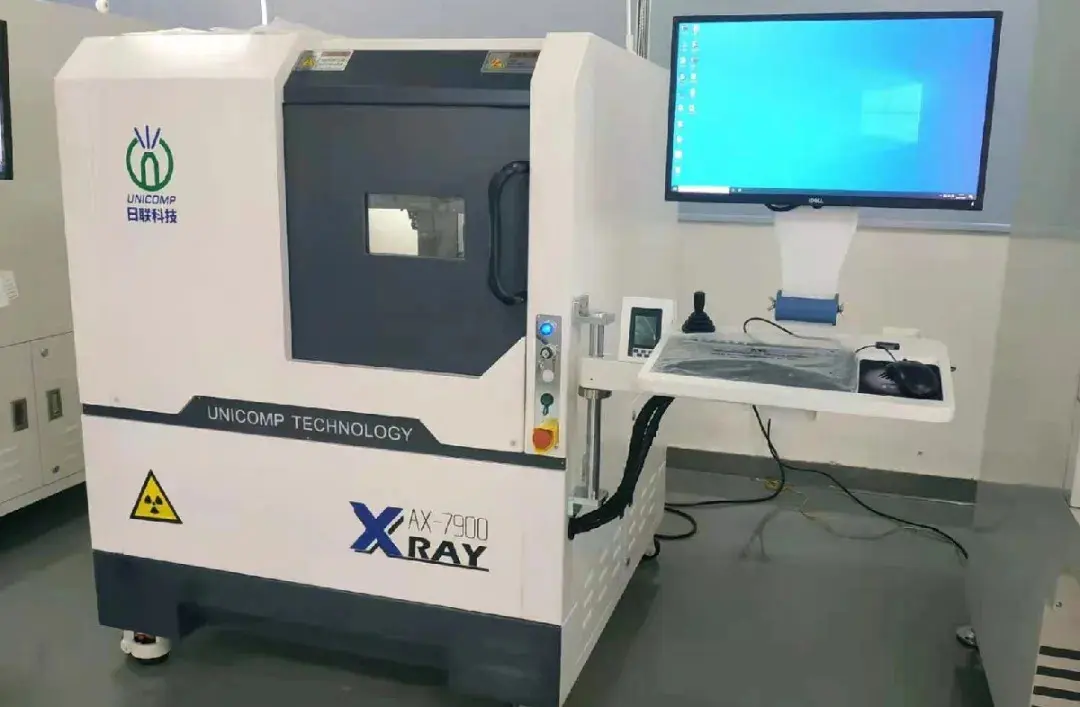 How to get an ISO 11737-1 Test Report?
How to get an ISO 11737-1 Test Report?
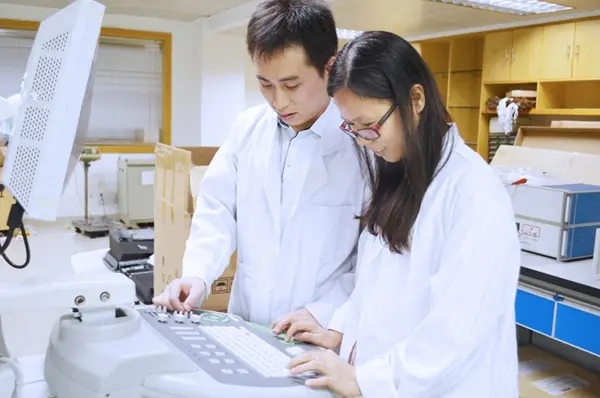 Orthopedic Implant Cleanliness Testing
Orthopedic Implant Cleanliness Testing
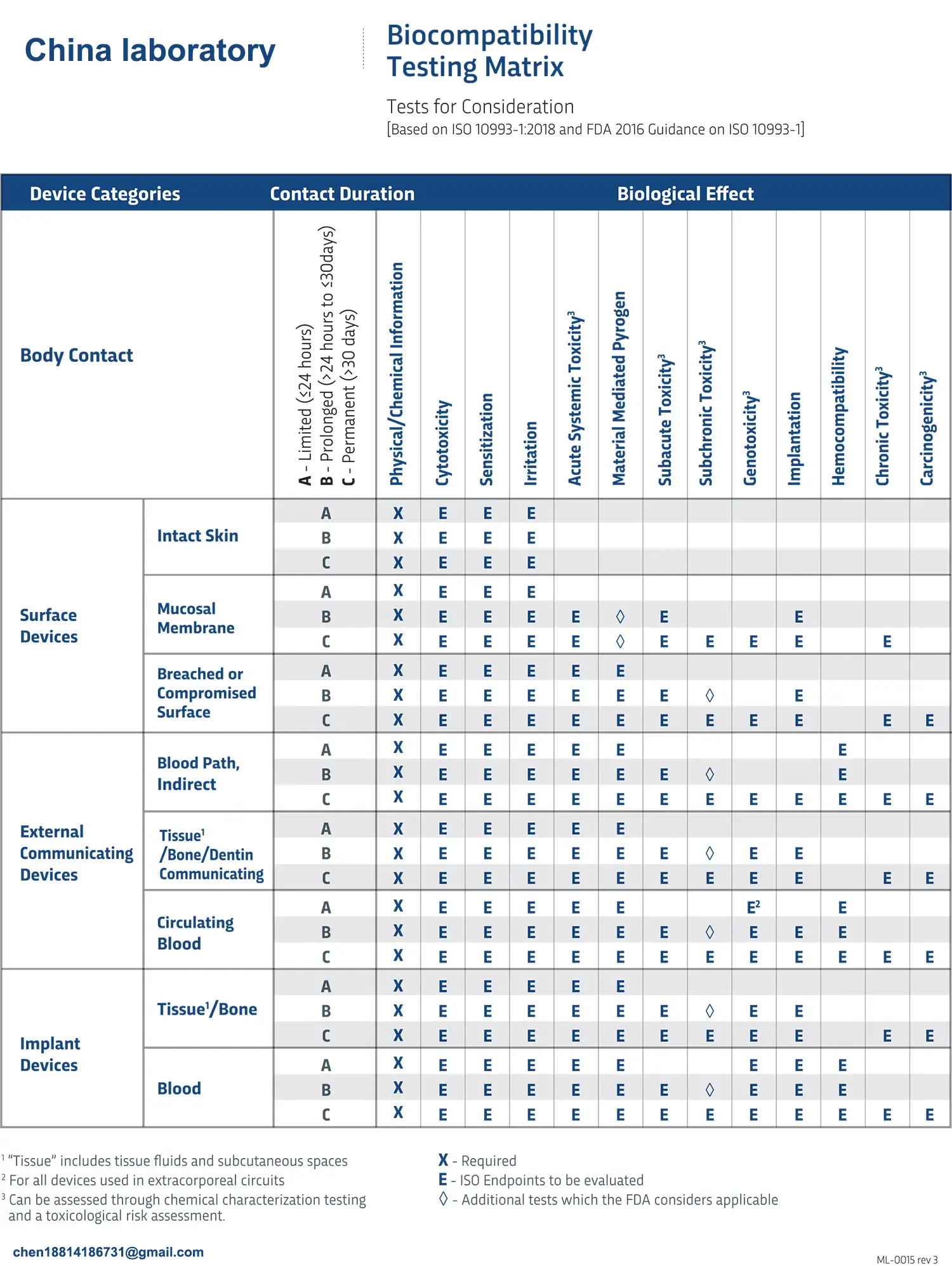 What is ISO 10993-23:2021 Irritation Testing?
What is ISO 10993-23:2021 Irritation Testing?
 ISO 10993-23 Irritation Testing Laboratory
ISO 10993-23 Irritation Testing Laboratory
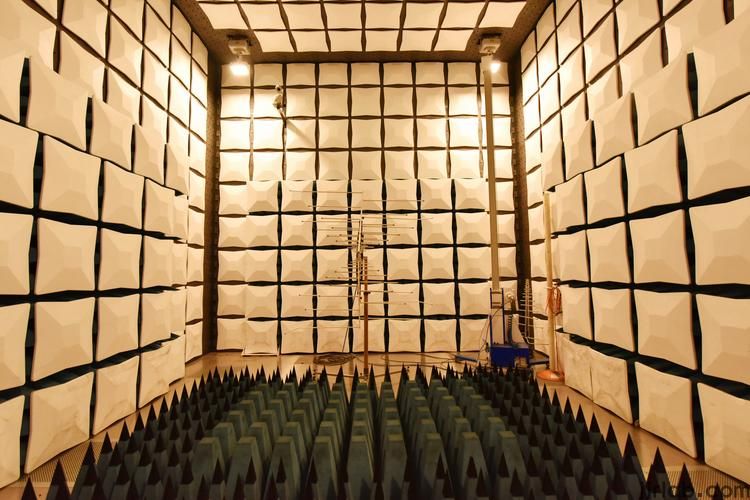 EMI Emissions Testing
EMI Emissions Testing
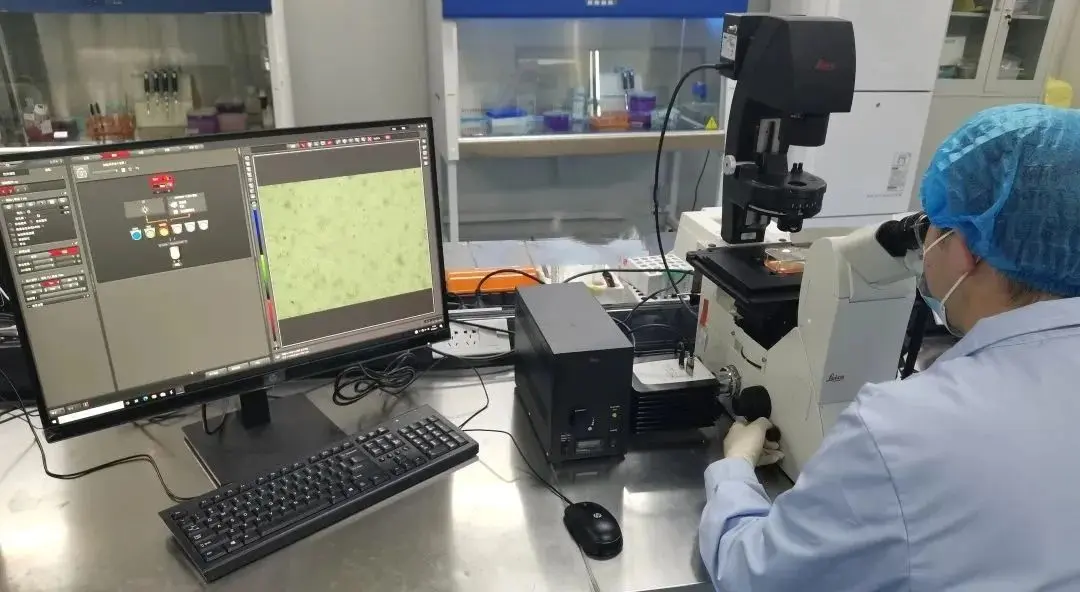 EMC Standards for Medical Devices
EMC Standards for Medical Devices
Leave us a message
24-hour online customer service at any time to respond, so that you worry!




